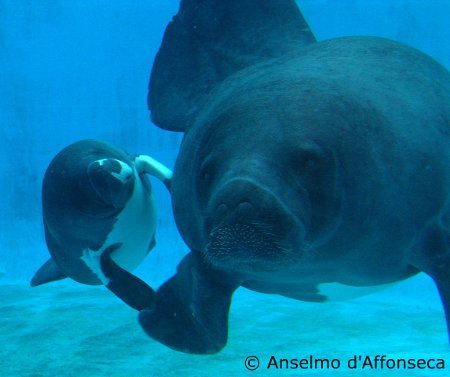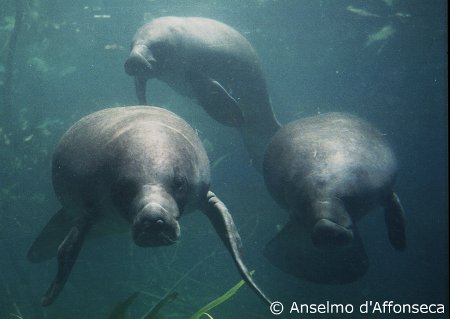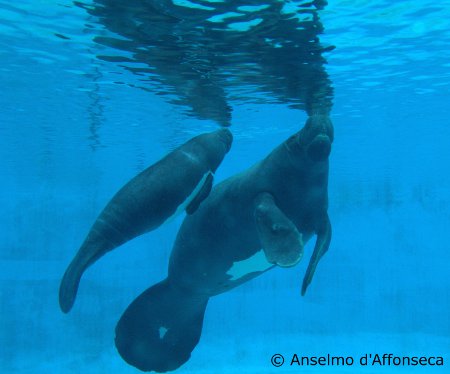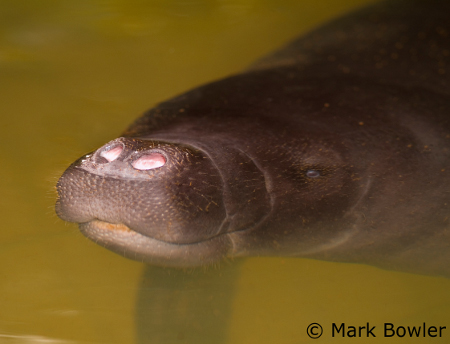 The sirenians (manatees and dugongs) belong to an ancient and incredibly diverse family known as the Afrotheria: other members include aardvarks, elephants and elephant shrews!
The sirenians (manatees and dugongs) belong to an ancient and incredibly diverse family known as the Afrotheria: other members include aardvarks, elephants and elephant shrews!
The Amazonian manatee (Trichechus inunguis) is the smallest member of the manatee family, the two other recognised species being the American/West Indian manatee (T. manatus) and the African manatee (T. senegalensis) – all of which are EDGE species. The Amazonian manatee is thought to have become isolated when the Andes mountain range uplifted 1.8-5 million years ago, changing the river drainage of the Amazon Basin from the Pacific to the Atlantic Ocean.
 Manatees are large aquatic mammals with skin that is 5cm thick, and they can be distinguished from dugongs mainly by their large paddle-shaped tails, longer flippers and smooth skin. Weirdly they also have a split upper lip and can move each half separately!
Manatees are large aquatic mammals with skin that is 5cm thick, and they can be distinguished from dugongs mainly by their large paddle-shaped tails, longer flippers and smooth skin. Weirdly they also have a split upper lip and can move each half separately!
This species is permanently aquatic and is the only one that lives exclusively in freshwater environments with deep connections to rivers and a large variety of vegetation such as grasses and water lettuce. As this food is low quality, a manatee must spend a lot of time eating and it can consume up to 15% of its body weight every day.

It is found in flooded forests and meadows when food is abundant, but water levels fall from July-August and some become restricted to deep lakes until the end of the dry season in March. During this time each manatee uses its large fat reserves and low metabolic rates to help it survive for up to seven months with little or no food.
This species is found throughout the Amazon River Basin of northern South America, from Brazil to the sources of the Amazon Basin Rivers in Columbia, Peru and Ecuador. In 1977 the population was estimated to number at least 10,000 but the current population status is unknown.
The Amazonian manatee has suffered extensive hunting throughout its range for its meat and thick hide since the 17th century. Commercial exploitation saw 4,000-10,000 manatees were killed per year from 1935-1954 in Brazil alone. Other threats to the species include accidental drowning in fishing nets and the loss of vegetation by soil erosion (a result of deforestation). Mining activities in the area also release mercury deposits and this could poison the entire aquatic ecosystem.
EDGE is working around the world to help preserve the wonderful biodiversity that our planet has to offer. Please help us by donating to our conservation programmes and spreading the word about how important it is to save the most unique species on Earth!
